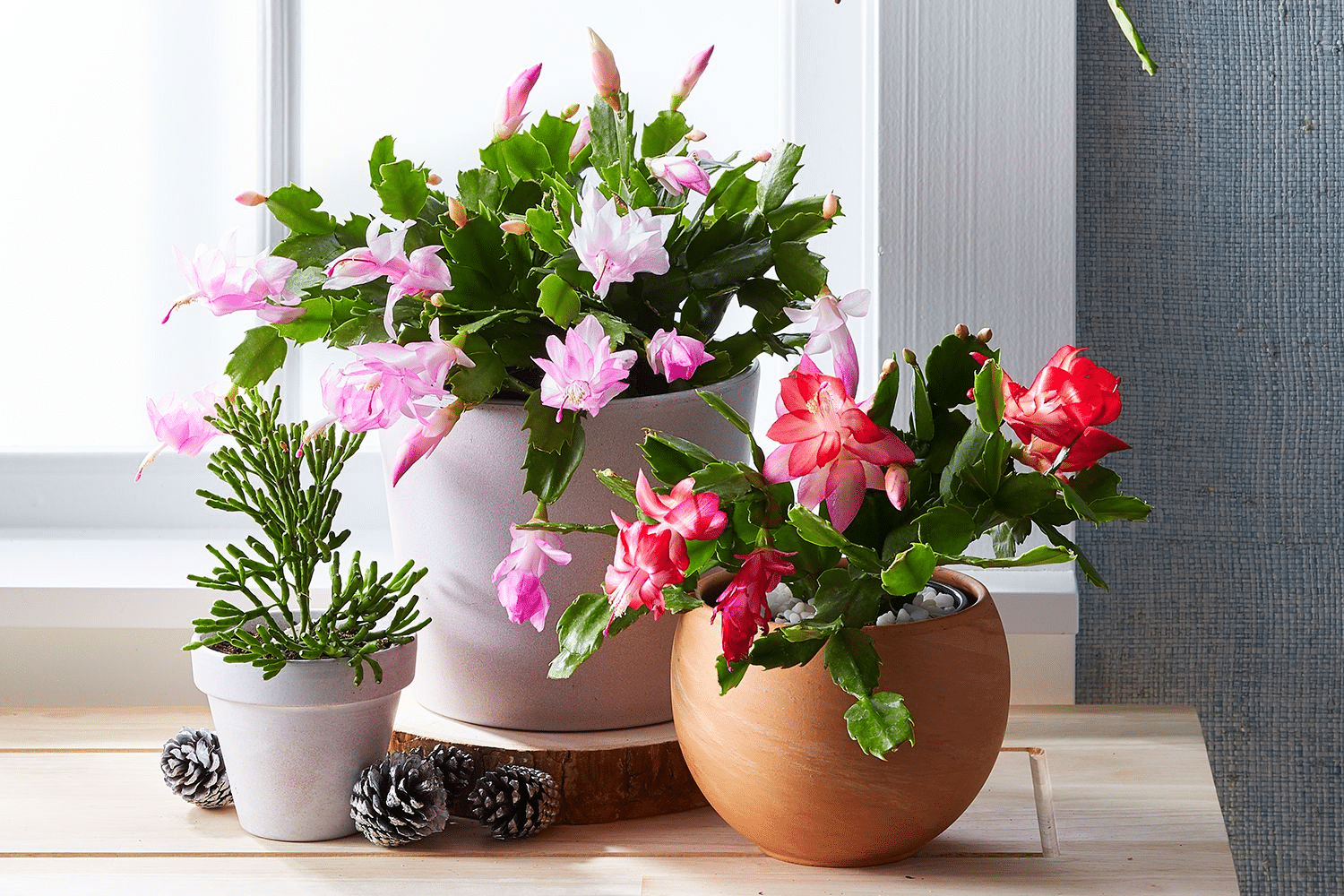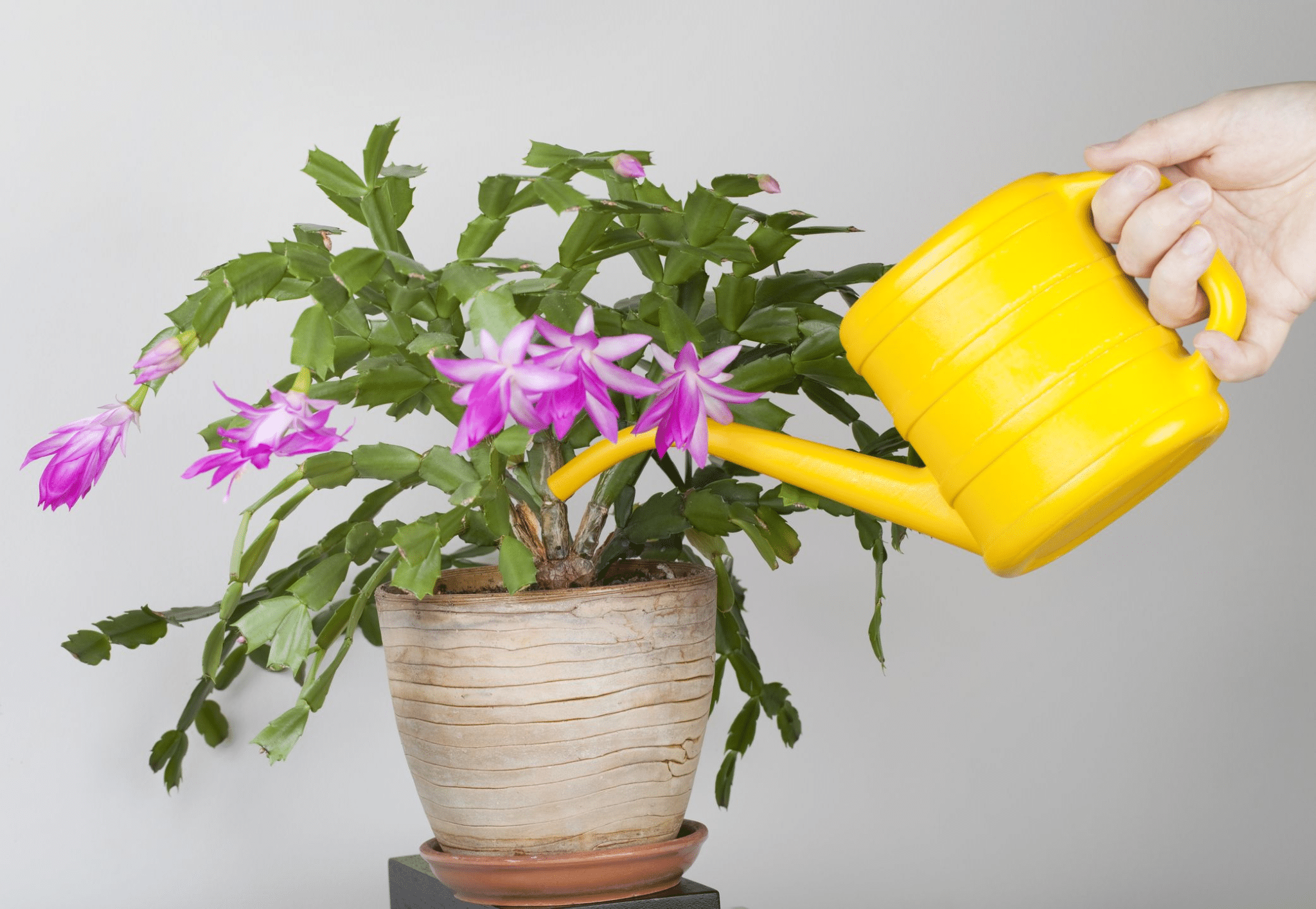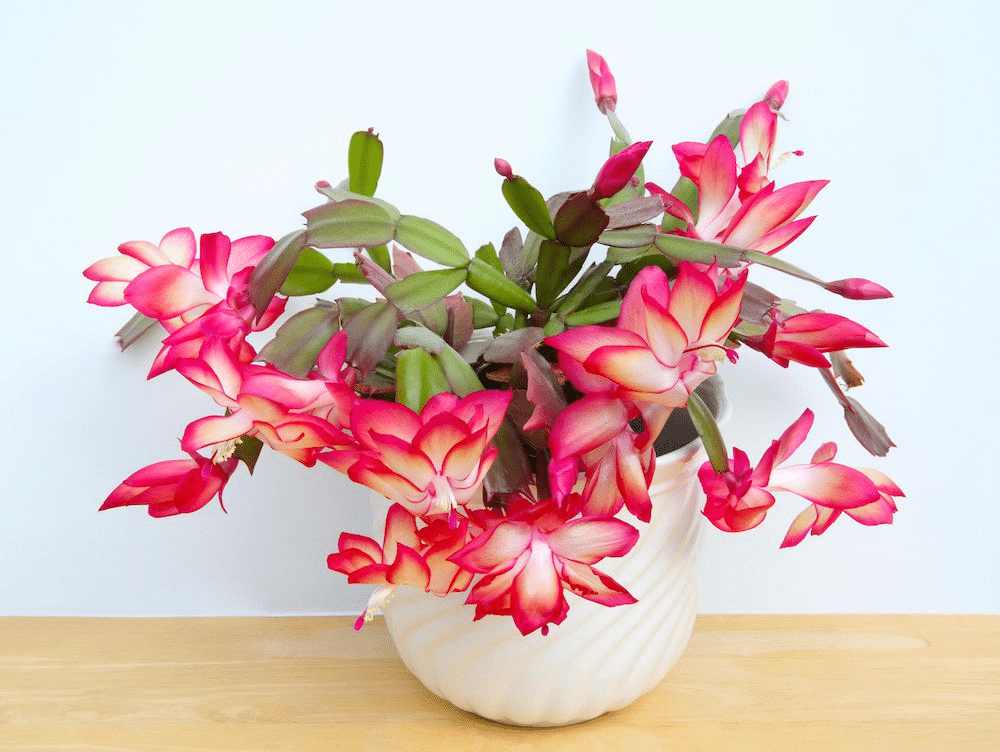Decorative plants are flowering plants that people grow indoors or outdoors to make homes, gardens, and offices look beautiful. They come in many shapes and sizes, from small pots of bright flowers to tall leafy trees, and they can add color, fresh air, and a feeling of calm to any space.
The christmas cactus is a favorite decorative plant because it has bright, colorful flowers that bloom in winter when most other plants are resting. To add a touch of festive cheer indoors, it is placed on windowsills, shelves, or as centerpieces on tables. Its flat, leaf-like stems and dangling blooms, which come in red, pink, white, and purple, look beautiful in hanging baskets.
Growcycle offers a complete guide for christmas cactus care. These help grow lush, healthy, and stunning christmas cactus plants indoors. It encourages the bloom of its beautiful flowers.
History and Origins
Christmas cacti (genus Schlumbergera) originally came from the rainy forests of southeastern Brazil, where they live high on tree branches or rocky cliffs as epiphytes. European botanists first described them in the mid-1800s—Charles Lemaire named the genus after French collector Frédéric Schlumberger—and nurseries soon began bringing them to Europe and North America as exotic, winter-blooming houseplants.
In the early 20th century, gardeners crossed the wild species to create hybrids with many flower colors and shapes. Because these plants often bloom from late November through December, they became known as Christmas cacti. Today, their easy care and bright blooms make them a beloved holiday gift and a cheerful indoor decoration when outdoor gardens lie dormant.
Physical Characteristics
The Christmas cactus has a distinctive appearance, making it different from other cacti. Some of its key features include:
- Flattened, segmented Stems: The plant has smooth, leaf-like segments connected end to end, forming trailing branches.
- Tubular Flowers: These flowers emerge at the tips of the segments and have a beautiful, layered shape with multiple petals.
- Color Variety: Red, pink, white, orange, and purple are the colors of Christmas cactus flowers, but some hybrid types display multiple colors.
- Non-spiny Nature: Unlike desert cacti, this plant does not have sharp spines, making it safe to handle.
- Long Lifespan: A Christmas cactus can live for several decades with proper care.

Care Guide for a Christmas Cactus
Caring for a Christmas cactus is simple but has different requirements from desert cacti. Here are essential care guidelines:

1. Light Requirements
It prefers indirect sunlight. Intense sunlight, particularly during the summer, can burn its leaves and may prevent it from blooming without light. A north—or east-facing window is ideal, but if placed in a south—or west-facing window, use cloth curtains to diffuse the light.
2. Temperature and Humidity
Unlike desert cacti, the Christmas cactus thrives in moderate temperatures and high humidity. The ideal daytime temperature is 65°F to 75°F, and at night, it is 55°F to 65°F. Humidity should be moderate to high. Placing the plant with stones and water on a tray can help maintain humidity.
3. Watering
Christmas cacti require regular irrigation but should not be over-irrigated. The soil should be kept slightly moist but never saturated. Irrigate when the upper layer of soil is dry. Reduce watering after the blooming period to encourage dormancy. Use room-temperature water to prevent shocking the roots.
4. Soil and Potting
An adequately drained soil mix is necessary to avoid root rot. Use a mixture of sand, potting soil, and perlite or orchid bark for effective results. Drainage holes are required to remove extra water from the pot.
5. Fertilization
Fertilize the Christmas cactus with a balanced, diluted fertilizer every month during the growing season. Stop nutrition in late summer to encourage flower bud formation.
Essential Tips to Encourage Blooms
A Christmas cactus can be encouraged to bloom with specific care, particularly in the weeks leading up to its blooming season. Here are the key steps to ensure beautiful flowers during the holiday season:
Provide Darkness
Christmas cacti require long nights and short days to start bud formation. About six to eight weeks before the desired bloom time, place the plant in total darkness for 12 to 14 hours each night in a closet or under a box. During the day, keep it in bright, indirect light. Continue this process for at least six weeks or until flower buds appear.
Adjust Temperature
Temperature plays a crucial role in bud development. To encourage blooms, keep the plant at a lower temperature, between 55°F and 60°F at night. Avoid placing it near heat sources, vents, or drafts, as sudden temperature changes can cause bud drop.
Reduce Watering
To promote blooming, irrigation should be slightly reduced during the bud-setting period. If the soil becomes dry, the plant may become stressed. After buds form, water them frequently again to keep them from dropping.
Stop Fertilizing
Stop fertilizing the plant a month or so before the desired bloom. Fertilization during this time may prevent blooming.
Avoid Disturbing the Plant
Do not move or rotate the plant too much once the buds form. Quick changes in light, temperature, exposure, or location can break buds off before blooming.

FAQs
When and how does the Christmas cactus bloom?
Christmas cacti naturally bloom in response to shorter daylight hours and cooler nights. To encourage buds, provide about 12–14 hours of darkness each night and 15–18 °C temperatures for 6–8 weeks before the expected bloom time.
Does a Christmas cactus need to be pruned?
Pruning is not necessary, but it can help promote bushier growth. Trim the plant after blooming by removing a few segments.
How long do the flowers last?
The blooms usually last one to two weeks, but with ideal conditions, they can remain vibrant for up to four to six weeks.
The Bottom Line
The Christmas cactus is a pretty plant symbol of hope and color in the cold winter months. It brings a touch of nature and joy into homes when other plants are sleeping. Whether given as a gift or kept as a family favorite, the Christmas cactus reminds us that with a bit of care and patience, beauty can bloom even in the quietest season. Visit Growcycle to learn more about its care tips to enjoy beautiful blooms during the winter holidays.















